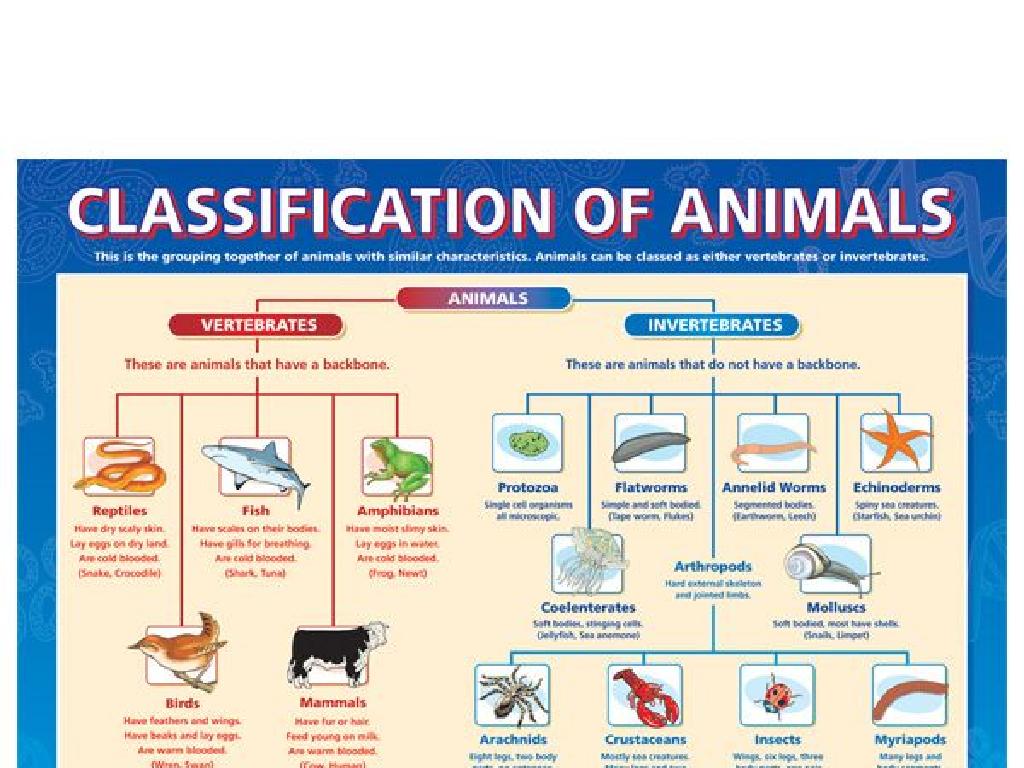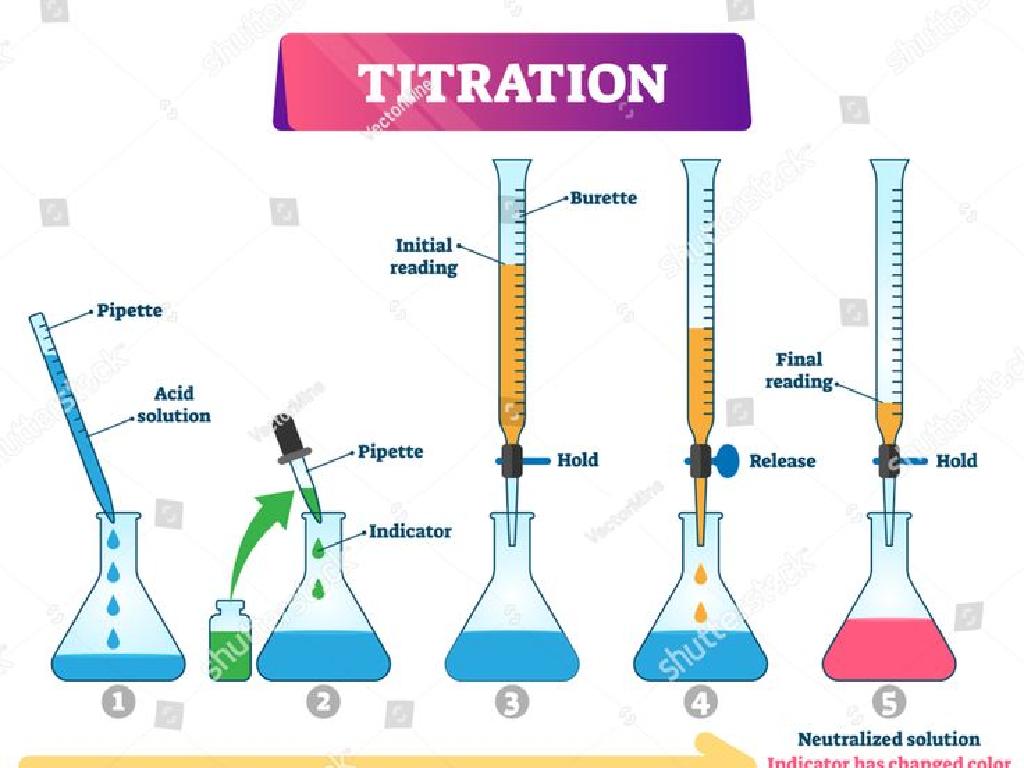Analyze Short Stories
Subject: Language arts
Grade: Eighth grade
Topic: Analyzing Literature
Please LOG IN to download the presentation. Access is available to registered users only.
View More Content
The Art of Analyzing Literature
– Explore the beauty of literature
– Understanding story analysis
– Analyzing means examining the story’s elements to understand it deeply.
– The significance of analysis
– Analysis helps appreciate the story and its nuances, leading to a deeper appreciation.
– Enhancing critical thinking
– Critical thinking is sharpened by interpreting themes, characters, and plots.
|
This slide introduces students to the concept of literary analysis. Begin by discussing what makes literature beautiful its ability to convey deep emotions, complex characters, and universal themes. Explain that analyzing a story involves looking closely at its components, such as plot, setting, characters, and themes, to gain a more profound understanding of its message and impact. Emphasize why analysis is crucial: it allows us to connect with the text on a deeper level and enhances our critical thinking skills. Encourage students to think of analysis as detective work, where they uncover the hidden layers of a story. This will set the stage for more detailed lessons on literary elements and analysis techniques.
Elements of a Short Story
– Key elements: Plot, Setting, Characters
– Plot: sequence of events; Setting: time/place; Characters: story’s actors
– Conflict and Theme
– Conflict: struggle or problem; Theme: central idea or message
– Each element’s role
– How elements contribute to the story’s depth and meaning
– Examples from literature
– ‘The Lottery’ by Shirley Jackson, ‘The Tell-Tale Heart’ by Edgar Allan Poe
|
This slide introduces students to the fundamental components that make up a short story. The plot is the backbone of the narrative, the setting provides context, characters drive the action, conflict introduces tension, and the theme conveys the underlying message. Understanding these elements helps students analyze and appreciate the intricacies of short stories. Use examples from classic literature to illustrate each element in action. For instance, ‘The Lottery’ offers a clear depiction of setting and theme, while ‘The Tell-Tale Heart’ showcases intense character-driven conflict. Encourage students to think of other stories they know and identify these elements within them.
Understanding Plot Structure in Short Stories
– Introduction to plot structure
– Key elements: Exposition to Resolution
– Exposition sets the scene, Rising Action builds tension, Climax is the peak, Falling Action winds down, Resolution concludes.
– Analyze a familiar story’s plot
– Consider ‘Cinderella’: Introduction of characters and setting, invitation to the ball, the ball itself, aftermath, and the happy ending.
– Significance of each plot element
|
This slide aims to familiarize students with the fundamental components of plot structure in literature. Begin by explaining the concept of plot structure as the framework that shapes a story. Discuss each element of the plot structure: Exposition introduces characters and setting; Rising Action introduces the problem and builds suspense; Climax is the turning point; Falling Action shows the consequences; Resolution ties up loose ends. Use a well-known story like ‘Cinderella’ to illustrate these elements in a relatable context. Emphasize the importance of each element in driving the story forward and how they work together to create a compelling narrative. Encourage students to think of other stories they know and identify these elements as homework.
Character Analysis in Short Stories
– Understanding character development
– How characters grow or change throughout the story
– Protagonist vs. Antagonist
– The main character vs. the character in opposition
– Dynamic vs. Static characters
– Characters who change vs. those who remain the same
– Analyzing character changes
– Look at how events impact characters over the story
|
This slide aims to delve into the complexities of character analysis within short stories. Start by discussing how characters can evolve through the narrative, highlighting the importance of character development to the plot. Compare and contrast protagonists (central figures) with antagonists (opposing forces), and discuss how their interactions drive the story forward. Differentiate between dynamic characters, who undergo significant internal changes, and static characters, who remain largely unchanged. Encourage students to think critically about how characters respond to events and what this reveals about their personalities. Use examples from well-known short stories to illustrate these concepts. This analysis helps students gain a deeper understanding of literary elements and enhances their interpretive skills.
Setting & Atmosphere in Short Stories
– Setting shapes the story’s world
– The backdrop where the story unfolds affects characters and events.
– Mood and atmosphere creation
– Descriptive words build the emotional setting, affecting how we feel.
– Time and place influence narrative
– Historical era or location can affect characters’ behavior and story’s direction.
– Analyzing setting’s role in plot
|
This slide aims to help students understand the importance of setting and atmosphere in short stories. Setting is not just the physical location, but also the time period, cultural environment, and social circumstances in which a story takes place. It can influence the plot and characters’ actions significantly. Mood and atmosphere refer to the feeling or emotion that the author conveys to the reader, often through detailed descriptions. Time and place are crucial as they can dictate the possibilities for a story’s events and characters’ lives. Encourage students to think critically about how different settings might change the narrative of familiar stories. Provide examples from well-known short stories to illustrate these points.
Theme & Symbolism in Short Stories
– Uncover the story’s theme
– The central idea or message in the story
– Identify symbols and meanings
– Objects, characters, or colors representing larger concepts
– Connect themes to real life
– Relate the story’s message to personal or observed experiences
– Analyze symbolism’s role
– Understand how symbolism enhances the depth of the theme
|
This slide aims to guide students through the process of analyzing the theme and symbolism in short stories. Begin by explaining that a theme is the underlying message or main idea that the author wants to convey. It’s often a universal concept about life or human nature. Symbols are used by authors to give deeper meanings to their stories and can be anything from a character to an object or a color that stands for something beyond its literal sense. Encourage students to think critically about how these symbols and themes relate to their own lives or to society as a whole. This will help them gain a more profound appreciation for literature and improve their analytical skills. Provide examples from well-known short stories to illustrate these concepts.
Conflict & Resolution in Short Stories
– Types of literary conflict
– Man vs. Man, Nature, Society, Self
– Conflict’s role in storytelling
– Conflict propels the narrative forward
– Resolution’s reflection on theme
– Resolutions often reveal the story’s deeper meanings
– Analyzing conflict and resolution
|
This slide introduces students to the concept of conflict in literature, which is essential for creating a compelling narrative. Discuss the four main types of conflict: Man vs. Man, Man vs. Nature, Man vs. Society, and Man vs. Self, providing examples for each. Explain how conflict is the driving force in a story, pushing characters into action and affecting the plot. When analyzing resolution, guide students to look for how the outcome of the conflict provides insight into the story’s themes. Encourage students to think critically about how the resolution ties back to the central conflict and what it suggests about the human experience. This analysis will deepen their understanding of literary elements and thematic messages.
Analyzing Short Stories: Synthesis
– Recap of story elements
– Setting, characters, plot, conflict, and theme
– Crafting a literary analysis
– Include thesis, evidence, and commentary
– Strategies for effective analysis
– Read critically, use text evidence, and interpret themes
– Class activity: Analyze a story
|
This slide aims to consolidate students’ understanding of short story analysis. Begin with a review of the fundamental story elements, emphasizing their importance in understanding and interpreting a narrative. Transition to explaining the structure of a literary analysis essay, including how to form a strong thesis and support it with textual evidence and personal commentary. Offer tips for a more effective analysis, such as reading critically and actively, questioning the text, and drawing connections to the story’s broader themes. Conclude with a class activity where students apply these skills by analyzing a selected short story, encouraging them to discuss their insights in small groups or as a class. Provide guidance on how to approach the analysis and facilitate a discussion that allows students to share different perspectives.
Class Activity: Dive into Short Stories
– Read the selected story together
– Form groups for discussion
– Analyze the story’s elements
– Discuss the plot, characters, setting, and theme
– Present your group’s analysis
|
This class activity is designed to engage students in active literary analysis. Begin by reading a short story together in class, ensuring that all students follow along and understand the text. After reading, have the students break into small groups to discuss various elements of the story such as the plot, characters, setting, and theme. Encourage them to look for literary devices and to consider the author’s purpose. Each group should then prepare a short presentation on their analysis, which they will share with the class. This activity promotes critical thinking, collaboration, and public speaking skills. Possible stories to analyze could include ‘The Lottery’ by Shirley Jackson, ‘The Tell-Tale Heart’ by Edgar Allan Poe, or ‘The Necklace’ by Guy de Maupassant, all of which are suitable for eighth-grade students.
Wrapping Up: Analysis & Homework
– Recap today’s literary analysis
– Understand analysis importance
– Analyzing literature sharpens critical thinking and comprehension.
– Homework: Short story analysis
– Write a one-page paper on the class story, focusing on themes, characters, and your interpretation.
– Share insights next class
– Be prepared to discuss your analysis with the class.
|
As we conclude today’s lesson, it’s crucial to review the key points of analyzing short stories, emphasizing how these skills enhance critical thinking and deeper understanding of texts. For homework, students are tasked with writing a one-page analysis of the short story read during class. This exercise will help them apply the concepts learned and articulate their interpretations. In the next class, students will have the opportunity to share their insights, fostering a collaborative learning environment. Provide a rubric for the analysis to guide students on what aspects to focus on, such as theme, setting, character development, and personal response.






